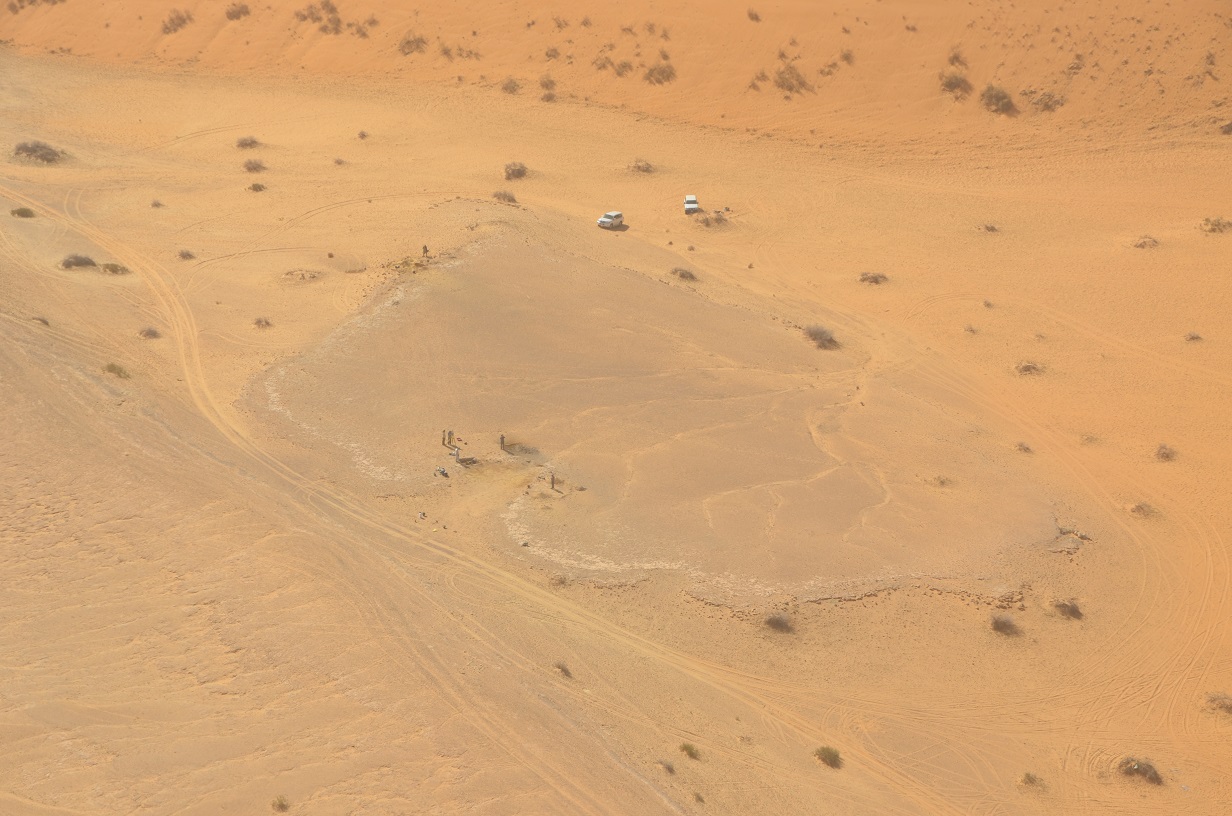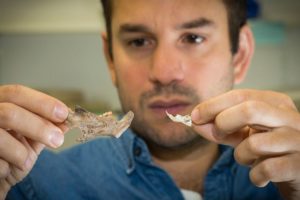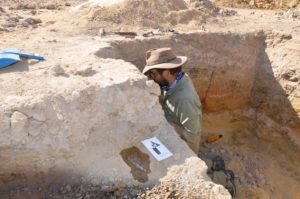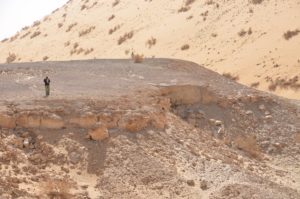
Griffith University researchers have played key roles in new research that shows pulses of increased rainfall transformed the generally arid Arabian Peninsula into a route for human population movements across Southwest Asia over the last 400,000 years.

Associate Professor Julien Louys, Dr Mathieu Duval and Professor Michael Petraglia from Griffith's Australian Research Centre for Human Evolution contributed to the Nature study led by Dr Huw Groucutt, head of the 'Extreme Events' Max Planck Society Research Group in Germany, which is based at the Max Planck Institute for Chemical Ecology.
Fieldwork by the international team and Saudi researchers from the Heritage Commission of the Saudi Ministry of Culture in the Nefud Desert of Saudi Arabia discovered archaeological sites associated with the remains of ancient lakes.
These lakes formed when periods of increased rainfall transformed the region into a grassland that was frequented by animals such as elephants and hippos.
The researchers found that during each 'Green Arabia' phase, early humans spread into the region, each bringing a different kind of material culture.
As arid conditions returned, populations contracted into more favourable environmental zones.

The new research establishes northern Arabia as a crucial migration route, and a crossroads for early humans who found migration challenging during arid periods.
Associate Professor Louys took part in the excavations and provided analysis of the faunal material recovered from the site as well as helping select fossils for radiometric dating with Dr Duval.
"Finding large mammal fossils in the middle of this hyper-arid desert was a unique experience," Associate Professor Louys said.
"The most remarkable thing about the fossils was the presence of several fragments of hippo bones. These are currently restricted to wet environments of Africa, but their presence in the Nefud during the last 400,000 years was very definitive proof that the Arabian Peninsula was significantly wetter than it is today."
The dating of the archaeological sites - achieved primarily through a technique called luminescence dating, which records the length of time since tiny grains of sediment were last exposed to sunlight - showed that each occupation dated to a time known to have had increased rainfall in the region.
This was also reflected by the fact that all of the stone tool assemblages were associated with the distinctive sediments produced by freshwater lakes, revealing that within a dominant pattern of aridity there were occasional short phases of increased rainfall in Arabia.
 As a result, the Nefud region was periodically transformed from one of the most uninhabitable parts of Southwest Asia, into a lush grassland that provided opportunities for repeated population movements during the past.
As a result, the Nefud region was periodically transformed from one of the most uninhabitable parts of Southwest Asia, into a lush grassland that provided opportunities for repeated population movements during the past.
Previous research in Southwest Asia has focused on the coastal and woodland margins of the region, while human prehistory in the vast interior areas remained poorly understood.
Lead author Dr Huw Groucutt described the new findings, including the oldest dated evidence for humans in Arabia at 400,000 years ago, as a "breakthrough in Arabian archaeology".
The research 'Multiple hominin dispersals into Southwest Asia over the last 400,000 years' has been published Nature.






